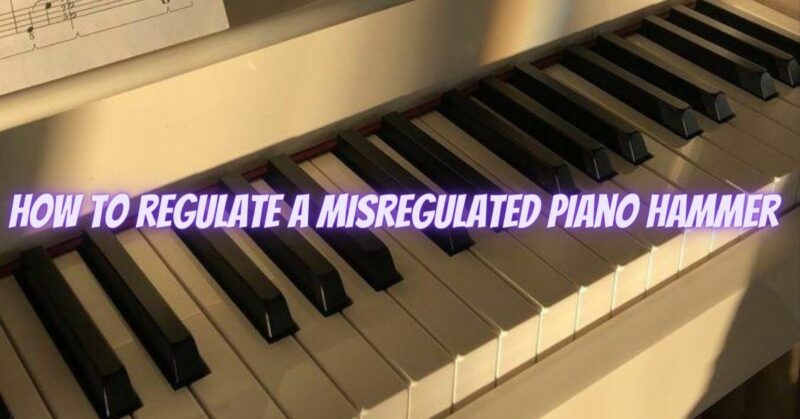A misregulated piano hammer can cause inconsistencies in tone, responsiveness, and touch, affecting the overall playability and musical expression of the instrument. Regulating the hammer involves adjusting various action components to ensure that each hammer responds uniformly and precisely when keys are pressed. In this step-by-step guide, we’ll walk you through the process of regulating a misregulated piano hammer.
Step 1: Assessment and Inspection
- Start by visually inspecting the piano action, including the hammers, dampers, springs, and other action parts. Look for signs of wear, misalignment, or damage.
- Play each key and observe any variations in key touch, sound, or responsiveness.
Step 2: Cleaning
- Clean the piano action using a soft brush and compressed air to remove dust, dirt, and debris. A clean action is essential for accurate regulation.
Step 3: Lubrication
- Apply a small amount of piano-specific lubricant to appropriate action components, such as hammer flanges and repetition lever pivot points. Proper lubrication ensures smooth and consistent movement.
Step 4: Key Height Adjustment
- Check the height of each hammer when at rest (keys fully released). Use a key height gauge or caliper to measure the distance between the hammer and the keybed.
- Adjust the key height as necessary to achieve a consistent and level keyboard.
Step 5: Key Dip Adjustment
- Measure the key dip, which is the distance the key travels down when fully depressed. Use a key dip block or gauge to determine the key dip measurement.
- Adjust the key dip to ensure consistent depth across all keys.
Step 6: Hammer Blow Distance Adjustment
- Measure the hammer blow distance, which is the distance the hammer travels toward the strings when the key is pressed. Use a hammer blow distance gauge or caliper for accurate measurements.
- Adjust the hammer blow distance to achieve uniformity and control in key touch.
Step 7: Hammer Alignment Adjustment
- Check the alignment of the hammers in relation to the strings. The hammers should be positioned perpendicular to the strings.
- Make any necessary adjustments to ensure proper alignment, preventing hammers from hitting multiple strings or missing the strings altogether.
Step 8: Voicing
- If tonal inconsistencies are present, consider voicing the hammers to achieve a balanced and expressive tone.
- Voicing involves shaping and needling the hammer felt to produce the desired tone quality.
Step 9: Testing and Fine-Tuning
- Play each key and evaluate the results. Make additional adjustments as needed to achieve a consistent and responsive keyboard.
Step 10: Regular Maintenance
- Schedule regular maintenance and regulation sessions with a qualified piano technician. Regular check-ups help keep the piano action in optimal condition and prevent future issues.
Conclusion: Regulating a misregulated piano hammer requires attention to detail and precise adjustments to various action components. While some minor adjustments can be done by piano owners, comprehensive regulation is best performed by a skilled piano technician. Proper regulation ensures that the piano action responds uniformly, producing a balanced and expressive sound, and providing a satisfying playing experience for pianists of all levels. With regular maintenance and care, a well-regulated piano can continue to inspire music-making for generations to come.


